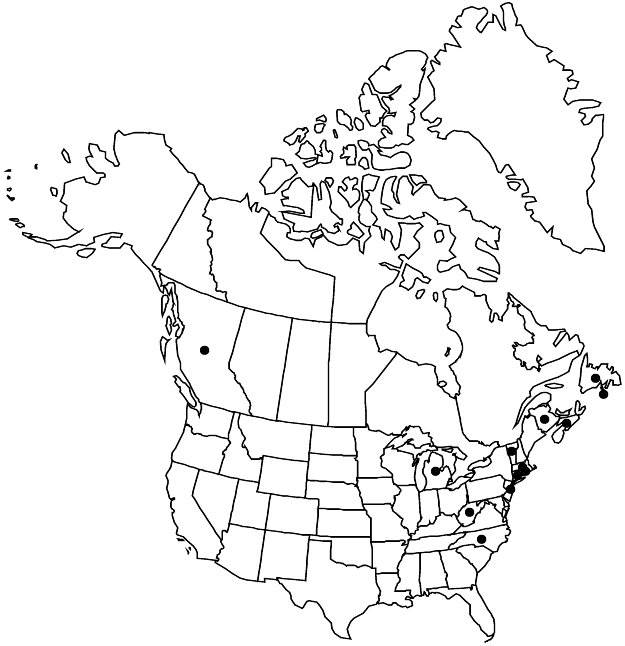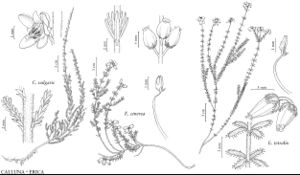Calluna vulgaris
Brit. Fl. ed. 2, 114. 1808,.
Shrubs 15–60(–100) cm. Leaves widely spaced on leading shoots, closely spaced and imbricate on later shoots; blade oblong-lanceolate to ovate-lanceolate, 2.5–3.5 × 0.5–0.7 mm, base auriculate-clasping, surfaces glabrous, keeled abaxially, concave adaxially. Pedicels: bracteoles 6–8 (4 distalmost simulating sepals). Flowers: sepals exceeding corolla, pinkish purple to white, petaloid, 3–4 mm; corolla pinkish purple to white, lobes 2(–3) mm; filaments glabrous; anthers 1 mm. Capsules 1–2 mm, hairy. Seeds 0.5–0.7 × 0.2–0.3 mm. 2n = 16.
Phenology: Flowering late spring–summer.
Habitat: Wet acidic sites in bogs and fens, upland sites in old pastures and roadsides
Elevation: 0-1500 m
Distribution

St. Pierre and Miquelon, B.C., N.B., Nfld. and Labr. (Nfld.), N.S., Conn., Mass., Mich., N.J., N.C., R.I., Vt., W.Va., Europe, w Asia.
Discussion
Calluna vulgaris is well known as a constituent of moorlands in northern and western Europe, especially northern England, Ireland, and Scotland. The places where it is naturalized in North America are mostly coastal; inland it often is associated with railroads.
Selected References
None.
